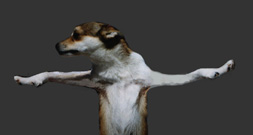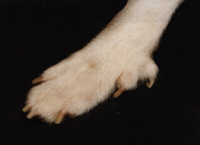


The Lundehund has several unique traits. They have at least 6 toes on each foot. Their limbs can extend out to 90 degrees from their bodies. Due to extra vertabrae in their necks they can touch the top of their heads to their backs.The only other mammal with this trait is the Reindeer! They also have the ability to close their ears when they get moist. They are they only dog breed known with this many unique characteristics. Their coloring is limited to Sable. Lundies are prone to a disease called Intestenial Lymphangiectasia, or IL, Which is know know as Lundehund Syndrome or LS. With a high protein and low fat diet, this can be controlled and studies are underway to find out which dogs are prone to the disease.



Seperate from the Lundehund study at Texas, some individual owners are experimenting with diets that are based on diets that "pre" domesticated Lundies might have eaten. The experimental diet is being given to IL Lundies and seems to be improving Total protein counts, but much work remains before the diet can be proven.
All and all, IL is fastly becoming a disease that is not neccesarily a death sentence. A majority of owners are regularly testing their Lundie Total Protein. This is a good indication of a dogs predisposition to IL.
